The #1 Killer in Hospitals Isn’t a Disease — It’s a Word
Before the unexpected happens, read this warning to keep your loved ones safe.
The following information is based on a report originally published by A Midwestern Doctor. Key details have been streamlined and editorialized for clarity and impact. Read the original report here.
Hospitals murdered COVID patients. The more they killed, the more money they made.
When the hospitals tested for COVID, they got paid more.
When they admitted patients for COVID, they got paid more.
When they put people on Remdesivir, they got paid more.
And when they put loved ones on the ventilator, they got paid more.
Meanwhile, family requests for ivermectin were denied, while their loved ones were placed on this death protocol instead.
If you think this started with COVID, think again. Hospitals are still a death sentence for loved ones.
Before the unexpected happens, learn how this death trap works to keep your loved ones safe.
This information comes from the work of medical researcher A Midwestern Doctor. For all the sources and details, read the full report below.
What Makes Hospitals So Deadly and How Can We Fix It?
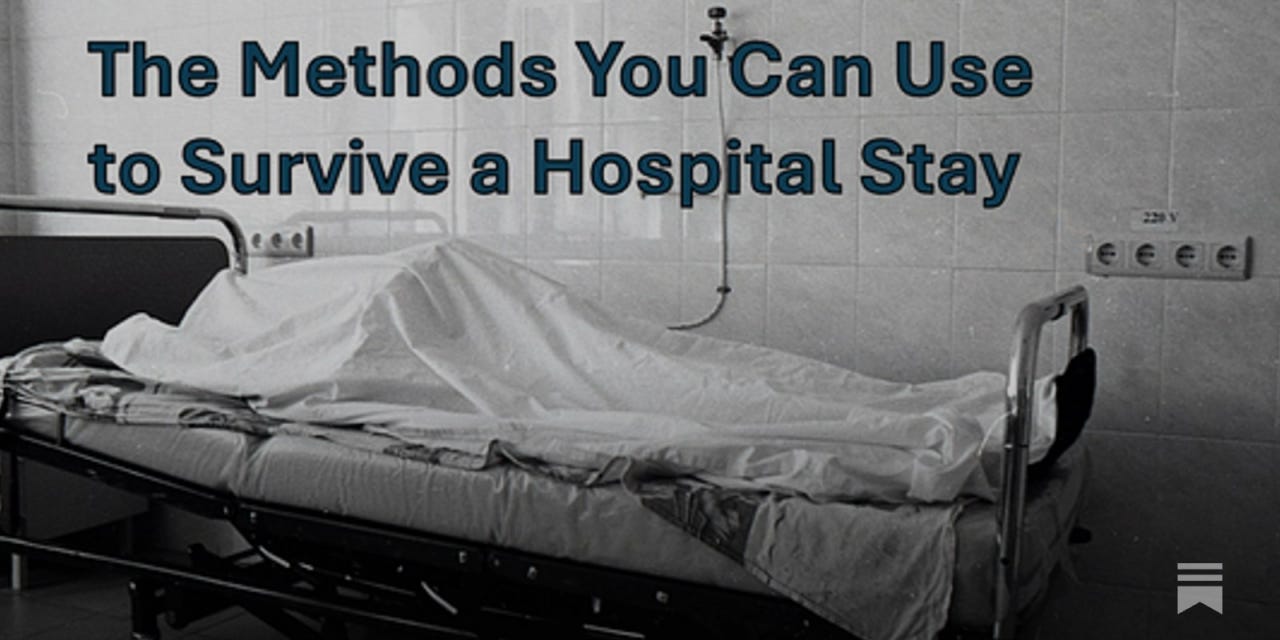
COVID pulled the curtain back for millions of people.
On a mass scale, we learned that hospitals across the country followed standardized federal protocols—not individualized care.
Things like Remdesivir and ventilators were pushed on dying patients.
Ivermectin and other affordable therapies were banned.
Even when doctors knew their patients would die, many refused to try alternatives.
And families were left in the dark.
Why did this happen?
Because the NIH treatment guidelines (written by Fauci’s hand-picked panel) financially rewarded hospitals for using Remdesivir and ventilators, and punished them for using cheaper, off-patent drugs.
Doctors who resisted were threatened and even fired.
Hospitals that complied were paid handsomely. Even when their success rates treating COVID patients were abysmal.
It’s common knowledge now. Remdesivir increased the death rate.
Hospitals and doctors had to see it playing out in real time, but it stayed the “standard of care.”
That’s because the committee behind those rules was stacked with people who had financial ties to Gilead, Remdesivir’s manufacturer.
Nothing about the COVID protocols used by hospitals around the country and around the world was actually about saving patients.
The main cause of preventable hospital deaths isn’t illness itself, but blind obedience to “protocol.”
When “protocols” replace thinking, patients die. It’s simple and it’s beyond tragic.
This report by
lays out the case brilliantly:What Makes Hospitals So Deadly and How Can We Fix It?

Desperate families had to sue hospitals for the right to give dying relatives ivermectin.
In 80 court cases handled by attorney Ralph Lorigo:
• 40 families won—38 of those patients survived.
• 40 families lost—only 2 survived.
Those numbers speak volumes. But hospitals still refused to change course.
One whistleblower nurse secretly recorded New York hospital staff during COVID.
Doctors openly admitted that they’d rather follow orders than try something that might save someone’s life.
Let that sink in.
It was a moment that exposed just how far medicine had fallen.
Unfortunately, this attitude wasn’t unique to COVID.
Well before the pandemic, this shift was already underway.
Medicine was moving away from the art of healing toward algorithmic obedience and billing codes. In this new world of medicine, doctors are trained to follow protocols, not question them.
Independent judgment is punished. Bureaucratic compliance is rewarded.
Hospitals have become more dangerous than the diseases they treat.
is shining a light on how—and what it’ll take to fix it.Read the full report:
What Makes Hospitals So Deadly and How Can We Fix It?

Hospitals are no longer run by doctors, but by corporate administrators obsessed with metrics.
When it comes to health and medical care, some metrics make sense. For instance, things like infection rates make sense to track.
Others are meaningless (like vaccination rates), yet they determine how much Medicare reimburses hospitals.
Doctors are trained and incentivized to chase numbers instead of outcomes.
Right now, the U.S. spends more on healthcare than any other equally wealthy nation—two to four times as much—yet has the worst outcomes.
In 1900, healthcare cost 0.25% of GDP. Now, it’s a monstrous industry built to serve investors, not patients.
Profit has replaced purpose. It’s profit over people to an extreme.
And most people who end up in a hospital aren’t prepared for it.
Hospitals are financially rewarded for shorter stays, not successful recoveries.
Read that again.
Medicare and JHACO accreditation require the average hospital stay to be under 96 hours.
Doctors are pressured to discharge patients early. And may be reprimanded when they don’t.
Patients who can’t recover fast enough are pushed toward palliative care or even hospice.
That should make everyone very, very angry.
This rule is literally killing people. That’s not a stretch.
Frailer patients often can’t handle the same aggressive drug doses used on stronger ones. They need slower, gentler care for success—but that obviously takes time.
Hospitals and their doctors don’t have time. They have quotas.
Take congestive heart failure, for example.
Aggressive fluid-draining over two days works for some strong and otherwise healthy patients. But in weaker ones, that level of aggression can cause kidney failure or death.
A slower, 4–5 day approach saves lives. There’s no question.
But hospitals don’t care. They push patients through like cattle on a conveyor belt.
When those patients who need more care and a slower pace inevitably decline, families are told: “There’s nothing more we can do.”
Then comes the morphine drip.
The “comfort care.”
The hospice transfer.
But there is more they can do. There’s a lot more they could have done. Instead, they choose systematized euthanasia. And it’s disguised as efficiency.
It’s disgusting.
Because hospitals want empty beds, they invest in social workers to handle discharges, not nurses to handle needed care.
If every floor had just a couple more nurses, outcomes would improve dramatically.
But administrators won’t pay for that, because it doesn’t boost metrics—at least not the ones they’re interested in measuring.
This obsession with early discharge actually costs more.
Patients leave before they’ve healed and often celebrate it, thinking that, despite how they feel, they must be strong enough to go home.
But they bounce back to the hospital for readmission—starting a fatal cycle that drains money and lives.
Quality analysts inside the system see the data. It’s so obvious. But they’re ignored.
It’s the same logic that shaped Obamacare.
Policies aimed to reduce end-of-life costs by denying costly care to people at the end of their lives. Critics called the practice death panels.
Right now, about one-fourth of all medical spending happens in the final year of life. Bureaucrats are always trying to shrink that number. How? By shrinking life itself.
Modern doctors are trained not to think.
They’re taught to follow the playbook, call for consults, and “manage expectations.”
We put them on a pedestal, but they’ve become mindless drones with a really expensive education.
Hospital doctors today are taught to accept death, not prevent it.
Of course, death is inevitable, but there’s often a fairly wide spectrum between entering the hospital and leaving via the morgue.
Death need not be an option for many people who unfortunately unnecessarily reach that outcome.
To Make America Healthy Again, we need to retrain doctors to think critically and outside of the box, tailor treatment to the unique patient before them, listen to patients and their families, and break free from bureaucratic pressure.
It’s not impossible.
Emergencies happen. Despite our best efforts, we and the people we love sometimes end up in the hospital. So how can families protect themselves?
Find out which hospitals and doctors near you have better outcomes.
When someone you love is hospitalized, stay at the bedside 24/7 as an advocate.
Engage staff calmly—build a trusting relationship, not confrontation.
And as always, treat at home with proper medical support whenever possible.
During COVID, countless families secretly gave “unapproved” treatments like ivermectin or vitamins—and their loved ones survived.
Those who trusted the system often didn’t.
It was tragic.
Sometimes saving a life means defying the rules.
There are still good doctors hidden within hospitals—the ones who think, question, problem solve, get creative, talk to their patients, and refuse to abandon the art of medicine.
Pierre Kory once analyzed ICU records and found massive differences in survival depending on which doctor you got.
In medicine, who treats you matters more than where you are.
That shouldn’t be the case. But it is.
Now imagine if hospitals revived the therapies that once worked—the ones bureaucrats buried.
Things like ultraviolet blood irradiation, DMSO, and high-dose IV vitamin C for sepsis (the #1 killer in hospitals).
Each could save thousands. Yet all were erased to protect the pharmaceutical monopoly.
The most effective medical intervention of COVID wasn’t a drug. It was suing the hospital. 38 lived. 2 didn’t.
It shouldn’t be that way, but it is.
Here’s what that says about our system:
What Makes Hospitals So Deadly and How Can We Fix It?

If RFK Jr. follows through on reform, the quickest way we can improve outcomes is hospital trials of these forgotten therapies—and restoring doctor autonomy.
Healing must come before profit. Doctors must not be punished for trying to save lives.
Hospitals don’t have to be where you go to die. But as long as money dictates medicine, they will be.
The cure isn’t another regulation or billion-dollar drug—it’s remembering what healing actually means and giving the power to heal back to doctors.
Thanks for reading! This information was based on a report originally published by A Midwestern Doctor. Key details were streamlined and editorialized for clarity and impact. Read the original report here.
For a deeper dive into what modern medicine has overlooked—or intentionally buried—check out these other eye-opening reports by A Midwestern Doctor:
The Great Alzheimer’s Scam and The Proven Cures They’ve Buried for Billions
Beyond Autism: What Tylenol Really Does to the Body
What’s The Healthiest Water To Drink?
While you’re at it, give A Midwestern Doctor a follow. No one brings more research, clinical insight, or historical context when it comes to exposing the health myths we’ve all been fed. This is easily one of the most valuable accounts you’ll ever follow.
If you haven’t subscribed to this Substack yet, take a moment to read what some of the most powerful voices in the medical freedom/truth movement have to say:
“The Vigilant Fox has been putting in a lot of work to create a news platform that shares the stories we want to hear about and brings attention to the most important things to know about.”
– A Midwestern Doctor, The Forgotten Side of Medicine
“The Vigilant Fox absolutely is on top of things. We must support our fighters, and the Fox is fighting with truth.”
– Tom Renz, Tom Renz’s Newsletter
“Excellent capture of key video presentations on evolving pandemic science.”
– Peter A. McCullough, MD, MPH, FOCAL POINTS (Courageous Discourse)





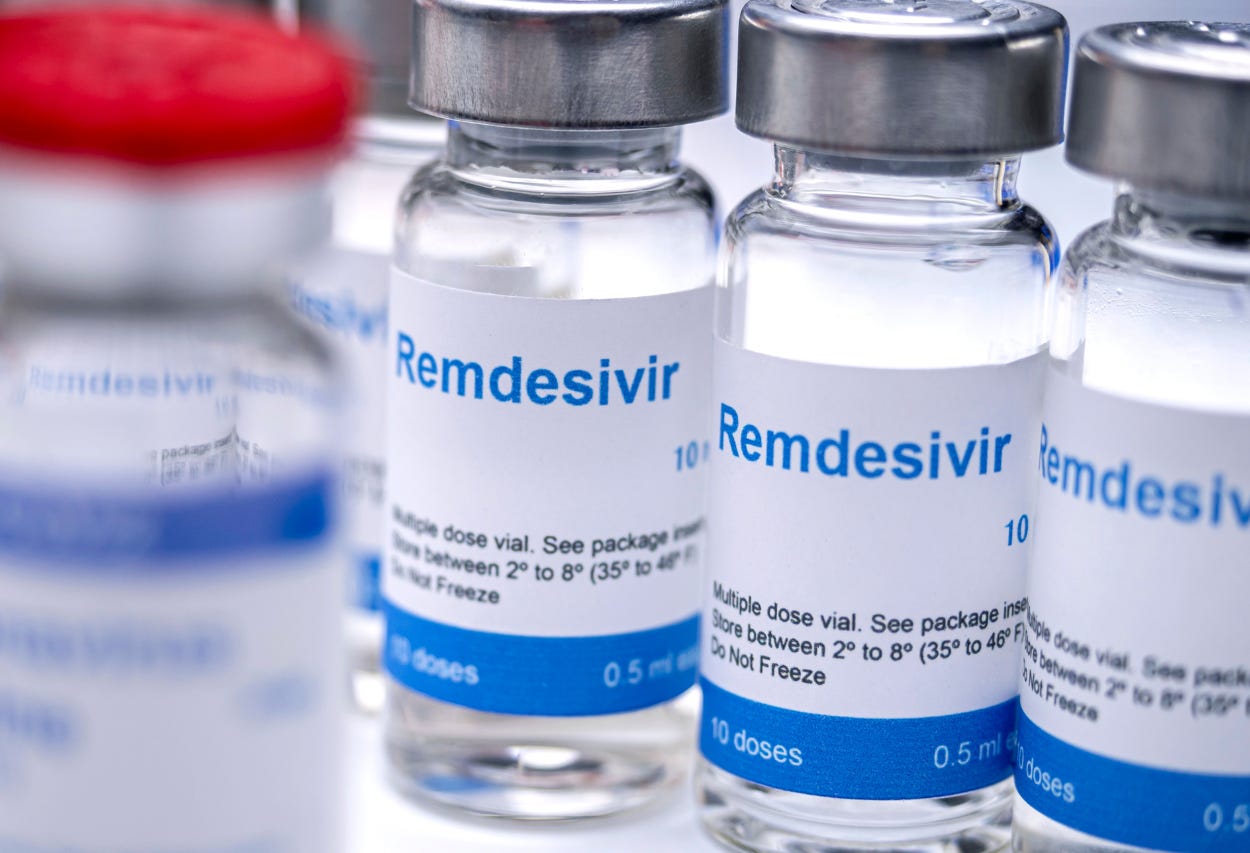





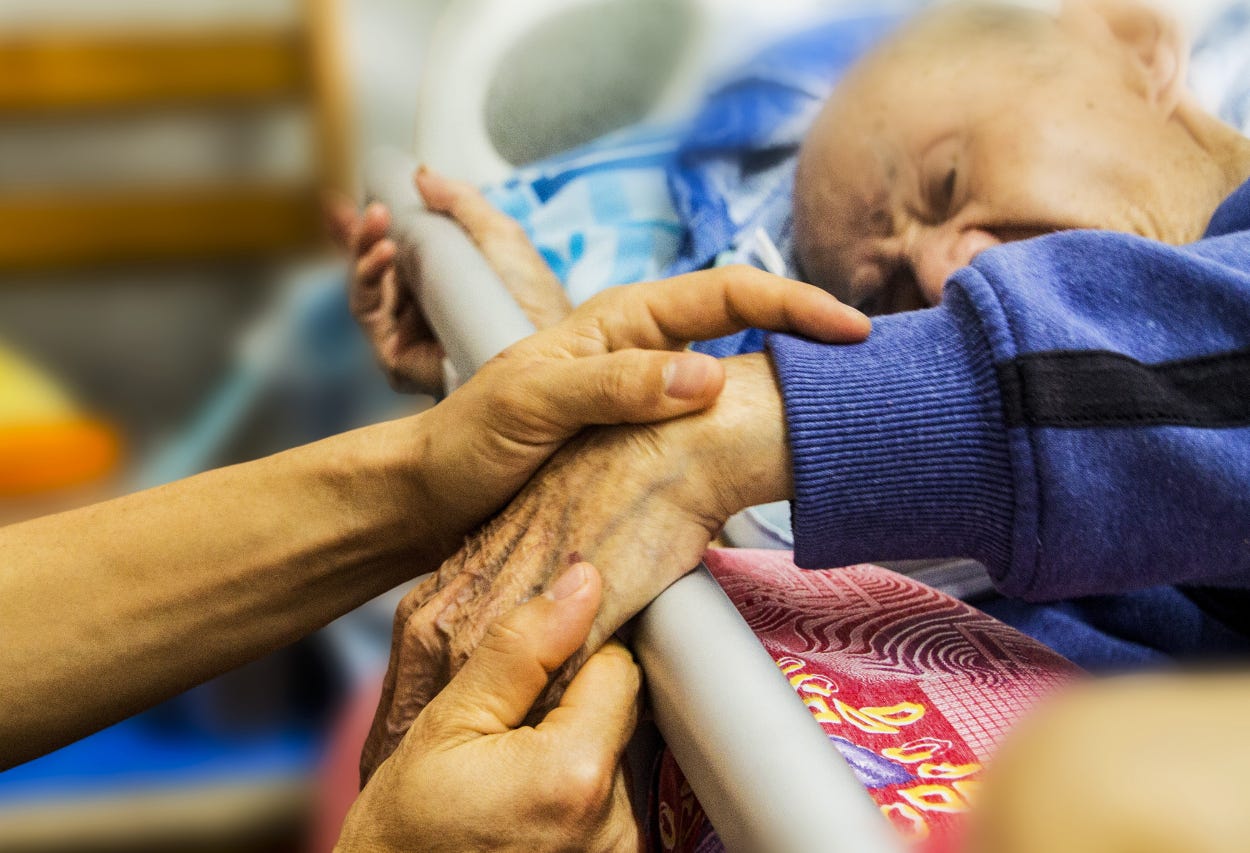












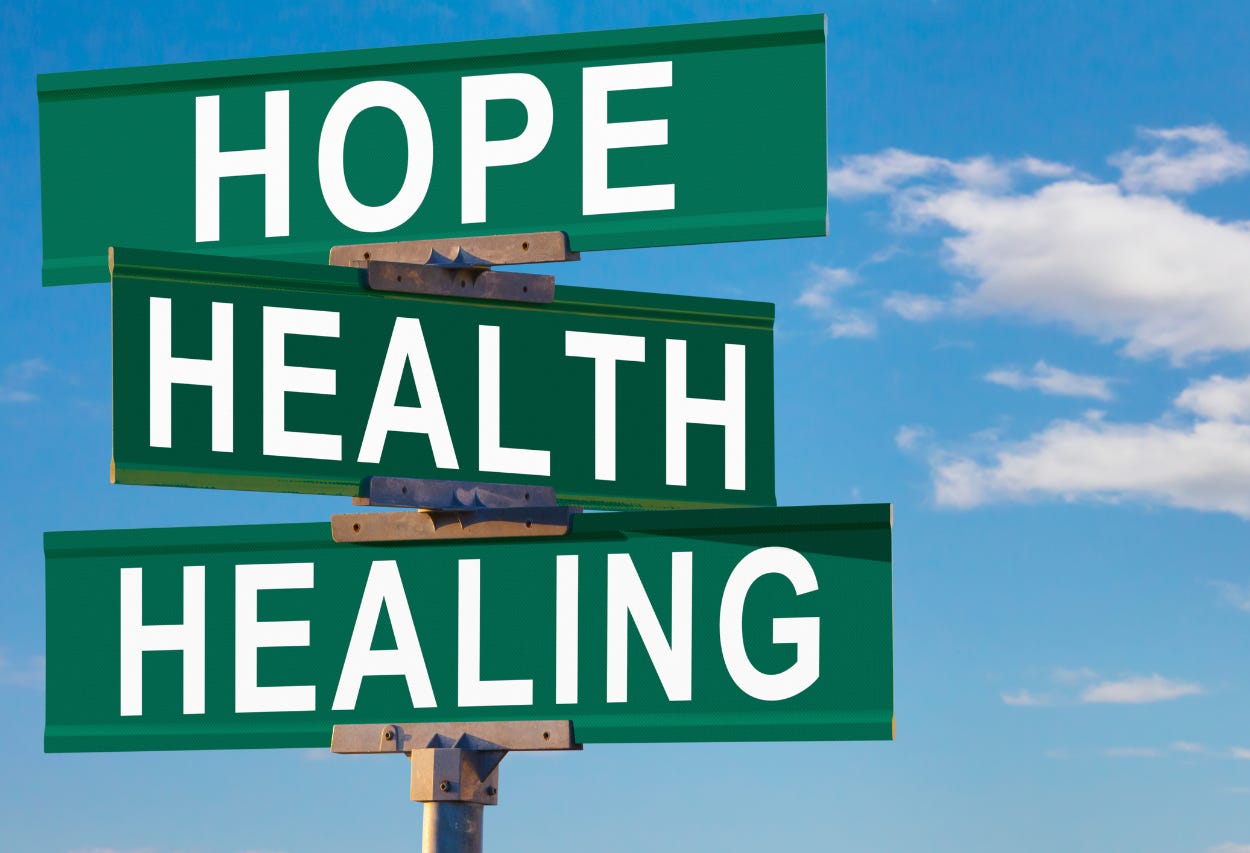

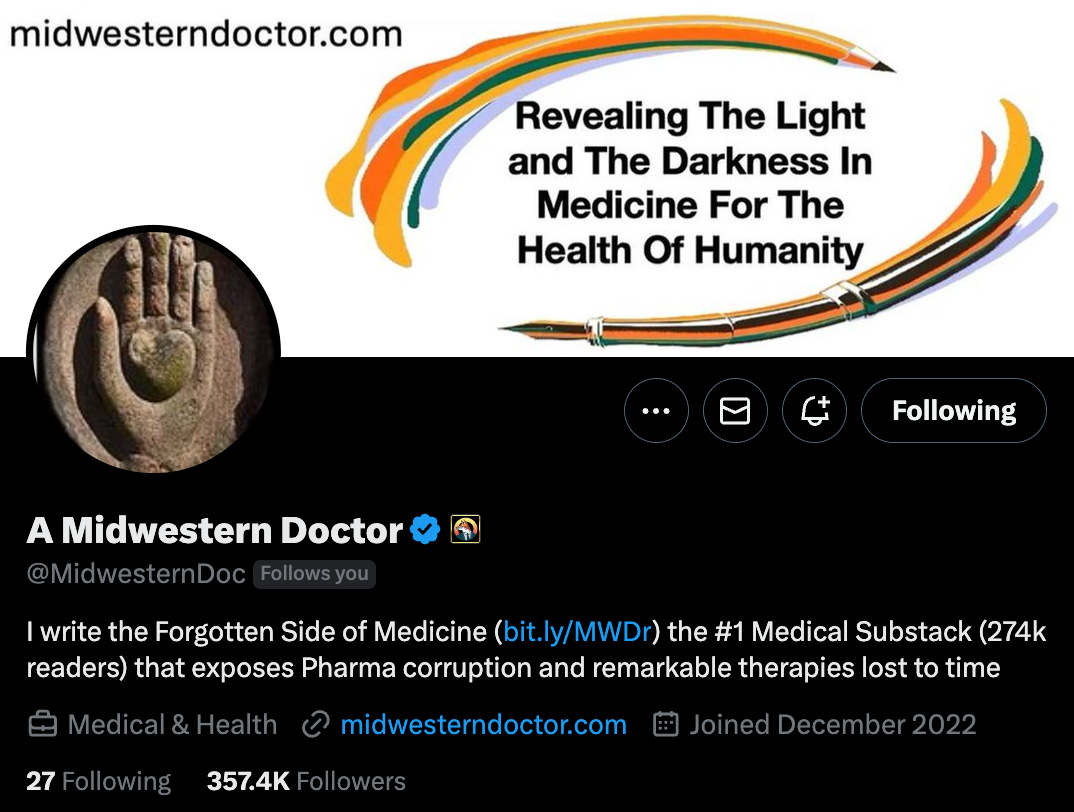

Lesson...confirmation, call it what you will at whatever stage of life you are in.
Stay as far away from the medical industry as possible. You are the product to be processed for their well-being. That is why your "physical" is now called a wellness check. Only it is not really about YOUR wellness. Take ownership of your own health and don't get caught in the vortex, if at all possible
Obamacare put private clinics out of business, including mine. Now most of the clinic physicians also work for a hospital. The COVID debacle could not have happened without independent physicians first being captured by hospitals due to Obamacare. They could follow the NIH protocol or lose their job and license. There are a few concierge docs who are still free to practice traditional medicine. Repealing Obamacare could possibly reverse this but it would take at least a generation. The electronic medical records force limited thinking. If there is no box to check for your diagnosis, you can’t have that diagnosis. I retired early because I like thinking.